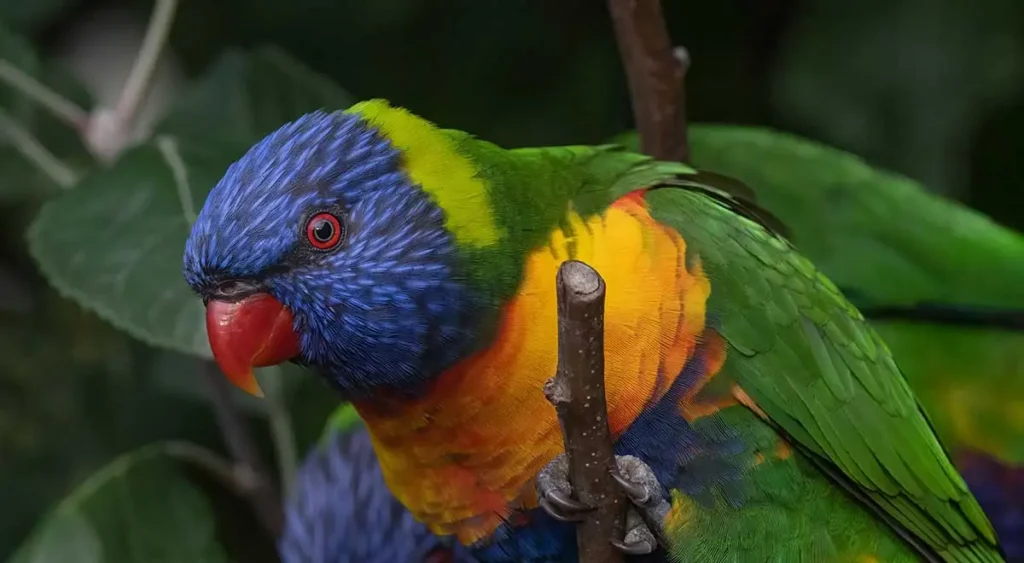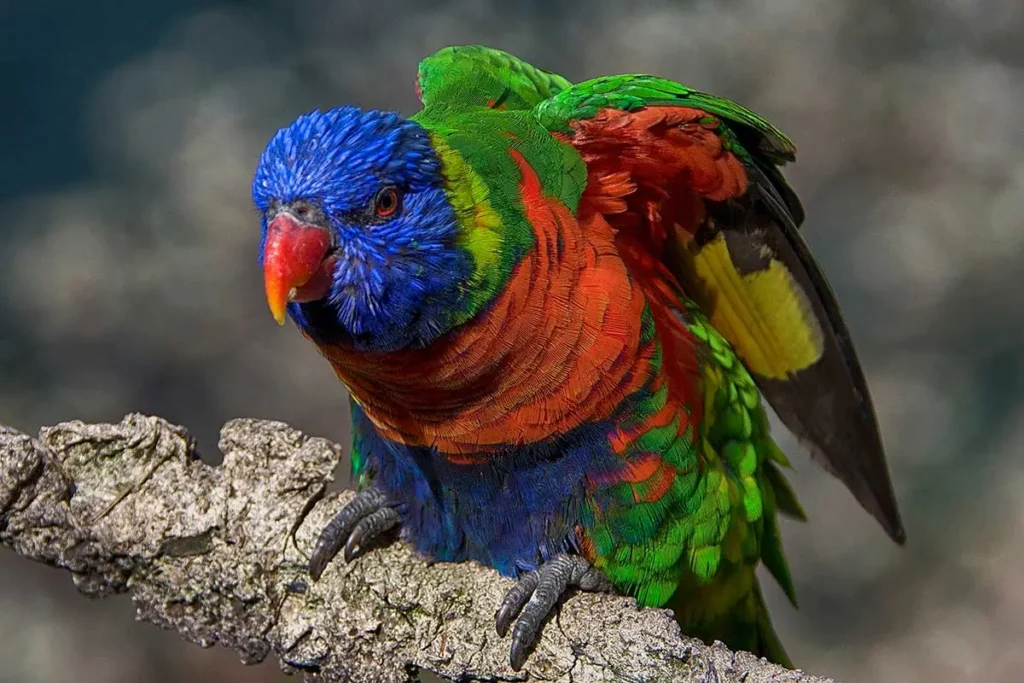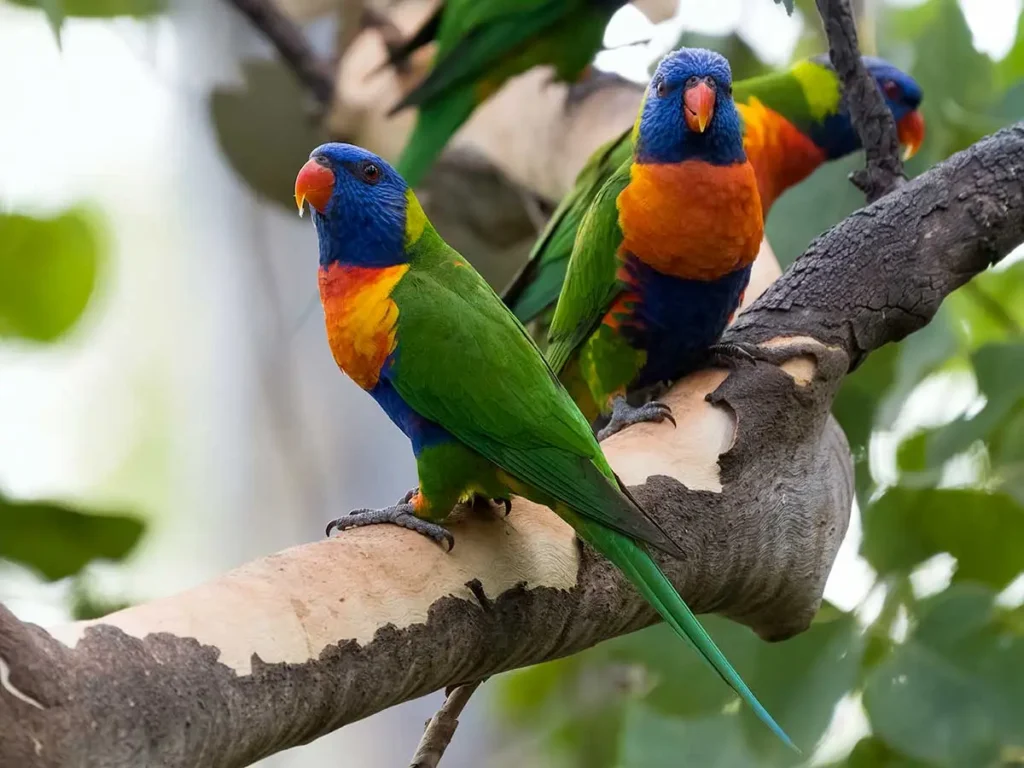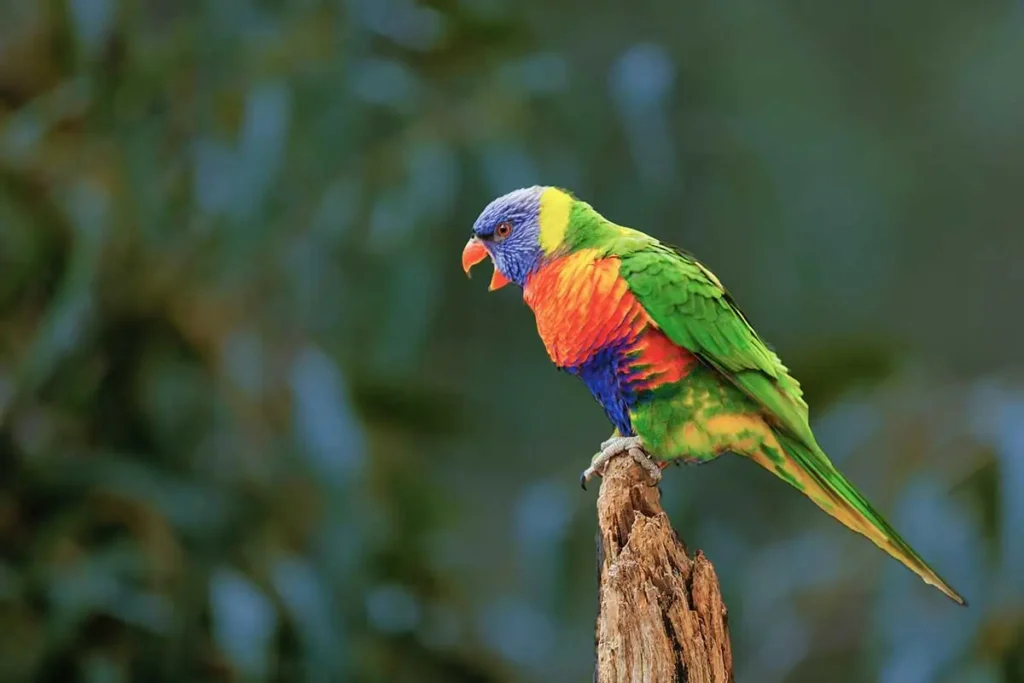
Rainbow lorikeets (Trichoglossus moluccanus) are some of the most colorful birds on the planet, with a vibrant mix of deep blue, bright red, orange, and green adorning their feathers. These brush-tongued parrots are native to northern and eastern Australia, but they have also been introduced to other regions. Known for their noisy flocks and social nature, these intelligent birds have become a favorite among bird enthusiasts and conservationists alike.
Taxonomy and Subspecies
The rainbow lorikeet is a species of the genus Trichoglossus and belongs to the family Psittaculidae. There are several subspecies of rainbow lorikeets, each with slight variations in appearance and habitat range.
Appearance and Coloration
Rainbow lorikeets are known for their stunning appearance. Their most notable features include:
- Deep blue head: The top of their head and nape are a brilliant blue color.
- Bright red beak: Their beak is a striking red that contrasts against the blue of their head.
- Green wings: Their wings are predominantly green, with some yellow and blue mixed in.
- Orange breast: Their chest is a mix of orange and yellow.
- Yellow wing bar contrasts: The yellow wing bars contrast nicely with the green wings.
- Greenish yellow nuchal collar: A greenish-yellow collar extends from the back of their head down to their neck.

Distribution and Habitat
Rainbow lorikeets are native to northern and eastern Australia, including northern Queensland and southern Australia. They have also been introduced to western Australia, where they have established populations. These birds prefer coastal regions, woodlands, and rainforests, but they have also adapted well to urban areas with plenty of trees.
Diet and Feeding Habits
The diet of rainbow lorikeets, an exotic species and a highly intelligent bird, primarily consists of nectar and pollen from flowering trees, as well as fruits. They use their specialized brush-like tongues to harvest nectar and pollen from flowers, as well as to eat fruits. Some of their favorite sources of nectar include eucalyptus, melaleuca, and banksia trees. Rainbow lorikeets feed on a variety of fruits, such as apples, berries, and figs.
In addition to natural food sources, rainbow lorikeets are frequent visitors to bird feeders and artificial feeding stations set up by bird enthusiasts. These stations often provide specially prepared nectar, sunflower seeds, and fresh fruit for the birds to enjoy. However, this has led to conflicts with many fruit orchard owners who view them as a nuisance due to the damage they can cause to crops.

Behavior and Social Structure
Rainbow lorikeets are noisy birds known for their raucous calls and chattering. They are social animals that live in flocks, often consisting of several pairs and their offspring. Rainbow lorikeet pairs are monogamous, and they form strong bonds with their mates.
These birds are often seen flying in fast-moving flocks, which can be quite a spectacle for onlookers. They are also known to form communal roosts with other rainbow lorikeets and other bird species, where they gather to rest and socialize in the evenings.
Reproduction and Nesting
Rainbow lorikeets nest in tree hollows, particularly in eucalyptus trees. They may also choose a hollow limb, palm trunks, or even an overhanging rock as their nesting site. The nest cavity is lined with wood shavings and decayed wood to create a comfortable space for the eggs.
The breeding season for rainbow lorikeets typically begins in late winter or early summer. The January clutch size usually consists of two eggs, which are incubated by only the female for about 25 days. After hatching, both parents take turns feeding and caring for the chicks until they fledge around 8 weeks of age.

Lorikeet Paralysis Syndrome
The paralysis syndrome is a potentially fatal condition that affects wild lorikeets. This syndrome causes progressive weakness and paralysis in the birds, eventually leading to death. While the exact cause of this condition is still unknown, it is believed to be linked to certain toxins found in their diet.
Conservation Status
Rainbow lorikeets have a stable population and are not considered to be at risk. Their conservation status is listed as “Least Concern” by the International Union for Conservation of Nature (IUCN). However, they can be considered a nuisance by some fruit orchard owners, as the birds are known to strip trees of their fruit and cause damage to crops.
Rainbow Lorikeets in Captivity
These colorful birds have become popular in zoos and private aviaries around the world, with the Louisville Zoo being one notable example. Captive rainbow lorikeets require a spacious cage with secure door locks, as they are known to be capable escape artists. A varied diet of nectar, seeds, and fresh fruit should be provided, and some owners choose to supply store-bought nectar as a supplement.
Interaction with Other Birds
Rainbow lorikeets are generally peaceful birds, but they can be territorial and aggressive when defending their nest or food sources. They have been known to chase off other bird species and even confront larger birds when necessary. However, they also form communal roosts with not only smaller birds but also with other similar-sized species.

Conclusion
Rainbow lorikeets are a fascinating and beautiful bird species that captivate people with their vibrant colors and social behavior. Their adaptability to various habitats, including urban areas, has allowed them to thrive in both the wild and in captivity. Their importance in pollination and seed dispersal makes them a vital part of the ecosystems they inhabit. With continued conservation efforts and responsible management of their interactions with humans, these remarkable birds will continue to thrive and delight future generations.
Overall, the rainbow lorikeet is a shining example of the beauty and diversity of bird species found throughout Australia and its surrounding regions. Their striking appearance, coupled with their intelligence and social nature, has endeared them to bird enthusiasts and casual observers alike. Whether flying through the sky in a noisy flock or perched in a tall tree, the rainbow lorikeet is a sight to behold and an important part of our natural world.
